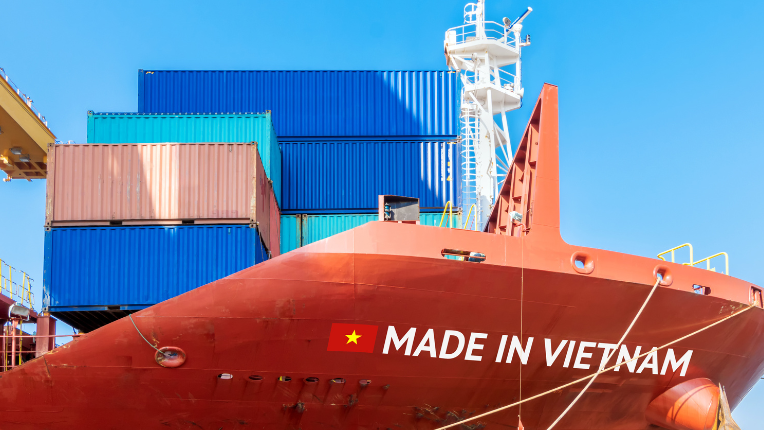
Vietnam - Concerns have been mounting in the United States that Vietnam's booming exports to America are not entirely what they seem. Fueled by tariffs on Chinese goods, the US trade deficit with Vietnam has surged, reaching a staggering US$123 billion last year, a threefold increase since 2018. This dramatic shift has led some to question whether Vietnam is simply a conduit for Chinese goods evading US tariffs or heavily reliant on Chinese components in its exports.
The argument, supported by a notable correlation between Vietnam's increased exports to the US and its surging imports from China, suggests that both the Trump and Biden administrations have struggled to decouple trade ties with China. However, a closer examination of trade data, particularly analysis by the Asian Development Bank (ADB), paints a more nuanced picture.
While it is undeniable that a significant portion of Vietnam's imports from China are ultimately re-exported, the ADB data reveals that this accounts for just over half of the total. A substantial 30% is absorbed by Vietnam's own rapidly growing economy, driven by rising domestic consumption. Furthermore, 17% of Chinese imports into Vietnam incorporate value originating from other countries, highlighting the complex interconnectedness of global supply chains.
Beyond the US: Vietnam's Diversified Export Markets
Crucially, Vietnam's export growth is not solely focused on the United States. In fact, exports to the rest of the world have increased even more significantly since 2018, rising by US$89 billion compared to the US$72 billion increase in exports to America. This suggests that a considerable portion of Vietnam's increased imports from China is destined for markets beyond the United States.
Applying a consistent ratio of Chinese content in Vietnam's exports to the rest of the world (based on pre-2018 patterns) allows for an estimation of the increased Chinese content indirectly exported to the US. This analysis indicates that while the share of indirect Chinese content in Vietnam's imports from China has risen to approximately 25% (up from 8% in 2018), a significant three-quarters is attributable to other factors.
Domestic Value Creation in Vietnam's Exports to the US
Breaking down Vietnam's exports to the United States further reveals that while the proportion of indirect Chinese content has increased (reaching 28% in 2022, compared to 9% in 2018), the majority (over 70%) still reflects non-China sources. Notably, the value produced domestically within Vietnam and exported to the US has increased by over 90% since 2018, demonstrating a substantial benefit for the Vietnamese economy.
Sector-Specific Considerations and Investment Trends
It is important to acknowledge that China's role may be more pronounced in specific strategic sectors. The recent US imposition of heavy import duties on Vietnamese solar panels due to excessive Chinese content underscores this point, reflecting China's dominance in the global solar panel supply chain. Moreover, focusing solely on the increase in Vietnam's exports to the US since 2018 suggests that indirect Chinese content accounts for around 40% of this growth.
Investment trends offer further insights. While Chinese manufacturing investment into Vietnam saw a significant surge in 2023, it has since moderated. Importantly, investment from other key players like South Korea, Taiwan, and Japan has remained robust, averaging around US$7 billion annually in recent years. This diversified investment landscape suggests that future Vietnamese exports will likely involve significant contributions from Chinese firms but with an even greater influence from other Asian economies.
A Key Player in Supply Chain Diversification
In conclusion, while China plays a notable role in Vietnam's export boom to the United States, it is not the dominant factor. Vietnam itself, alongside other partners in the global supply chain, constitutes the majority of the value in these exports. Furthermore, Vietnam's increasing domestic value creation in its exports to the US highlights the tangible benefits for the Vietnamese economy.
Rather than viewing Vietnam solely as a backdoor for Chinese exports, it is more accurate to recognize its crucial and constructive role in the ongoing diversification of global supply chains away from China. The question remains whether policymakers in the United States will acknowledge this valuable contribution or prioritize a complete reshoring of manufacturing.
[Copyright (c) Global Economic Times. All Rights Reserved.]



























